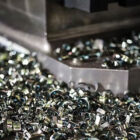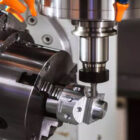The oil and gas industry is a leader in technical innovation, requiring accuracy and dependability in all aspects of operations, including boring. Within this industry, deep-hole drilling, threading, and exotic material machining are essential procedures that each present unique challenges. We examine the essential elements and recommended procedures for accomplishing the greatest possible outcomes in oil and gas boring operations in the blog below. Through comprehension and use of these methodologies, machinists may surmount the distinct obstacles presented by this ever-changing industry, augmenting efficiency, reducing unavailability, and guaranteeing exceptional calibre in each manufactured component. This extensive resource provides insightful guidance to help you negotiate the complexity of the oil and gas industry, regardless of your level of experience.
Unique challenges in oil and gas boring operations
Deep-hole drilling
The process of deep-hole drilling entails boring holes with length-to-diameter ratios that frequently surpass 10:1. In the oil and gas industry, this method is frequently used to make parts like drill collars, casing and tubing.
The challenges that come with deep-hole drilling are as follows:
- Heat dissipation: Tool life and material qualities may be impacted by the substantial heat produced by deep holes.
- Chip evacuation: Maintaining surface quality and avoiding tool damage require the effective removal of chips from deep holes.
- Tool deflection: As hole depth grows, there is a greater chance of tool deflection, which can affect surface polish and dimensional accuracy.
The solutions to the above challenges are as follows:
- Coolant systems: To control heat and facilitate chip evacuation, high-pressure coolant systems can be used.
- Step drilling: Use step drilling methods to gradually increase hole depth and improve chip management.
- Tool design: To reduce deflection, choose boring bars with increased stiffness and vibration-dampening characteristics.
Threading
In the oil and gas industry, threading calls for strength and accuracy, particularly for parts that must endure high pressures and strains, such as drill pipes and couplings.
The challenges that come with threading are as follows:
- Dimensional accuracy: To guarantee a good fit and seal, stringent tolerances must be maintained.
- Tool wear: When working with hard or abrasive materials, threading procedures can result in severe tool wear.
- Surface finish: Reducing wear and friction requires a smooth surface finish.
The solutions to the above challenges are as follows:
- Threading cycles: To strike a balance between speed and accuracy, optimize threading cycles and parameters.
- High-quality inserts: Make use of ceramic or carbide inserts with coatings to lessen wear and enhance surface smoothness.
- In-process inspection: Use in-process inspection methods to keep an eye on thread quality and make necessary modifications.
Machining exotic materials
Because of their strength and resistance to corrosion, exotic materials like Inconel, Hastelloy, and titanium alloys are frequently utilized in the oil and gas industry. These materials are difficult to manufacture, though.
The challenges that come with machining exotic materials are as follows:
- Work hardening: Exotic materials have a tendency to work harder, which makes cutting them more challenging and increases tool wear.
- Heat management: Heat concentration occurs near the cutting edge due to the limited thermal conductivity of certain materials.
- Tool life: Common problems include rapid tool wear as well as tool failure.
The solutions to the above challenges are as follows:
- Coolant application: Make sure there is enough flow of coolant to control heat and avoid work hardening.
- Coatings: To cut down on heat and friction, use tools with advanced coatings like titanium aluminium nitride (TiAlN).
- Tool material: Because of their hardness and resistance to wear, use tools manufactured of carbide or CBN (cubic boron nitride).
Boring bar selection for oil and gas applications
To successfully navigate the obstacles of oil and gas machining, selecting the appropriate boring bar is essential. Here are some key considerations.
- Material compatibility: Choose boring bars that are appropriate for the material being machined. For instance, carbide boring bars work well with exotic alloys and hardened steels, whereas high-speed steel (HSS) could be better suited for less demanding uses.
- Rigidity and stability: To reduce deflection and vibration, make sure the boring bar is very robust and stable. This is especially crucial for precision threading and deep-hole drilling.
- Insert geometry and coating: Select inserts with shapes that lessen cutting forces and aid in chip evacuation. Coatings like aluminium titanium nitride, or TiAlN, can improve heat management and wear resistance.
- Coolant delivery: When choosing boring bars for deep-hole drilling applications, make sure they include internal coolant channels for efficient cooling and chip evacuation.
Best practices for oil and gas boring operations
To ensure productivity, accuracy, and safety in oil and gas boring operations, it is essential to follow best practices such as routine tool maintenance, precise setup, monitoring, and skill development investments.
- Regular tool maintenance: To guarantee optimum function, perform regular maintenance procedures on boring bars and inserts. This covers upkeep such as cleaning, checking, and replacing worn components on schedule.
- Precision setup and alignment: To preserve surface smoothness and dimensional precision, make sure that the boring bars are lined up and aligned precisely. To confirm setup, use precision measuring tools like CMMs and dial indicators.
- Monitoring and optimization: To maximize performance, keep an eye on the machining settings and make adjustments as necessary. To ensure excellent quality, make use of in-process inspection and adaptive control systems.
- Training and skill development: Ensure that machinists are skilled in the use of cutting-edge machining techniques and tools by providing them with training and skill development opportunities.
Boring operations in the oil and gas industry face particular difficulties, such as deep-hole drilling and exotic material machining. Machinists can achieve desired results by comprehending these challenges and implementing cutting-edge methods and best practices. Improving tool life, productivity, and machining quality requires careful consideration of boring bar selection, efficient coolant systems, and creative machining techniques. FineTech Toolings is an expert at manufacturing precision boring bars in Bangalore that are made to satisfy the exacting specifications of the oil and gas industry. Their advanced tools, together with the techniques described in this guide, can help machinists overcome the particular difficulties associated with oil and gas machining, thereby increasing productivity and quality in their work.






